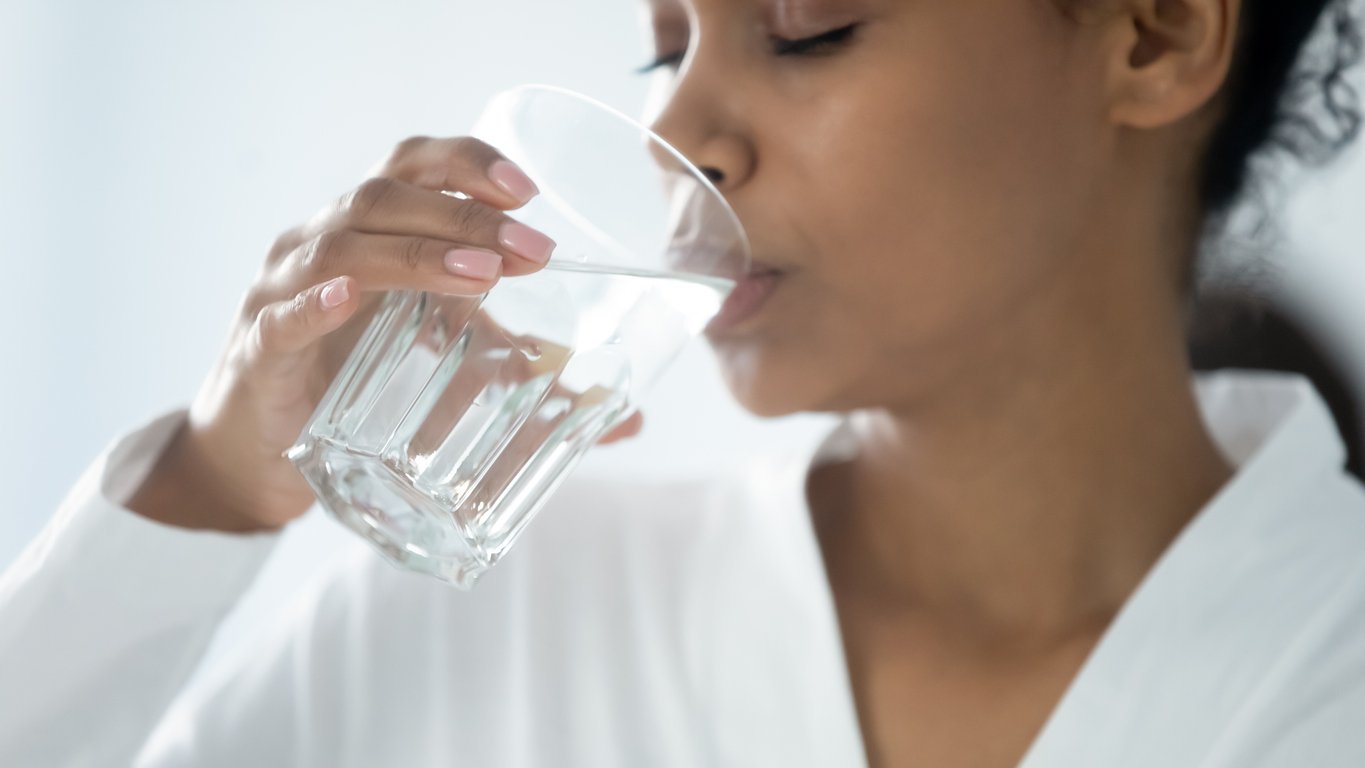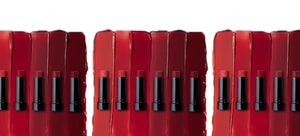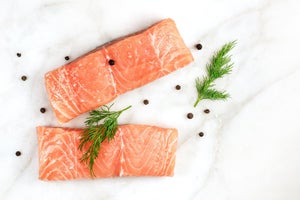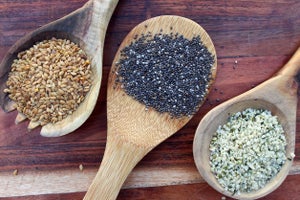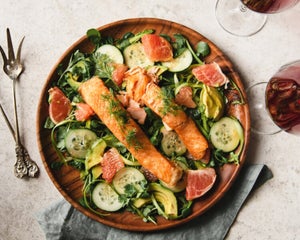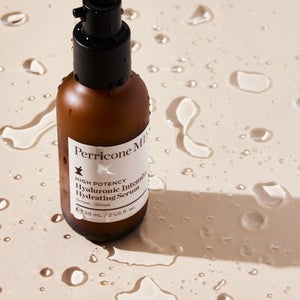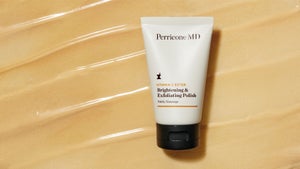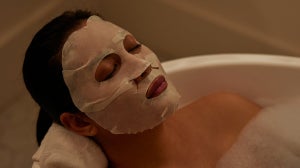Most of us are good about carrying around a water bottle all day to ensure that our bodies stay hydrated. But our skin gets thirsty too! It needs hydration or moisture—and in some cases, both. Many skincare companies use the words “hydrating” and “moisturising” interchangeably when labeling their products but there are subtle differences to these two terms that can impact how you should treat your skin and what products you should be using on it to keep it looking hydrated, radiant and healthy.
What is hydration?
Hydration refers to the water content of your skin cells. How much or how little H2O we have in our cells boils down to a combination of our personal lifestyle choices, medical conditions and the climates in which we live.
Diet and exercise habits also play a large role. Drinking water plumps our skin cells with water, preventing dehydration (so shoot to drink at least 64 ounces per day). Eating plenty of fruits and veggies—especially watermelon, strawberries, peaches, oranges, lettuce, celery and cucumber, which all have a high water content—expands skin cells, too. On the flip side, drinking caffeine and alcohol can cause dehydration, as these beverages act as mild diuretics (meaning they increase urination). And while exercise is good for both your skin and your body, sweating causes water loss, so ensure you’re sipping water as you work out to replenish lost fluids.
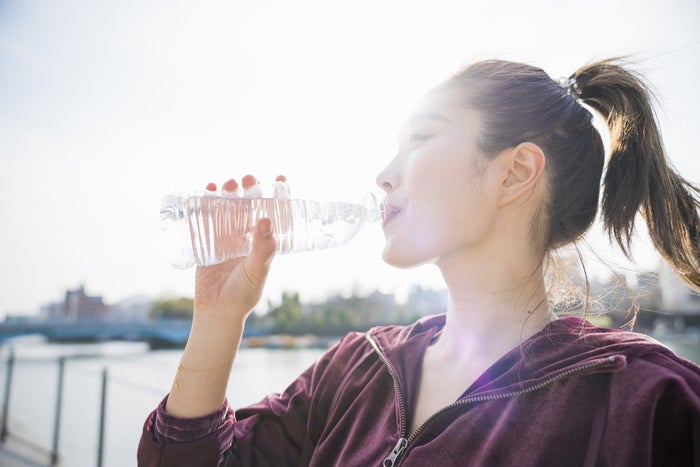
Certain diseases like diabetes, can also lead to dehydration, as can some medications and dietary supplements. Read medication and supplement labels carefully to find out if dehydration is a potential side effect of whatever you’re taking—and if it is, be sure to compensate by increasing your water intake.
But perhaps the biggest indicator of hydration is your climate. Your skin cells not only soak up water from the foods and drinks you consume, but also from the humidity in the atmosphere. So, if you live in (or are visiting) an area with a dry, desert climate (think the Southwestern region of the United States), there isn’t enough moisture in the air for your skin cells to absorb, leaving skin feeling parched. During hot summer months, you tend to sweat a lot, which can deplete your skin of water, and air conditioning, which is usually on full blast indoors, can dry out skin, too.
What is moisturisation?
While hydration is about pulling water into your skin cells, moisturization is the process of preventing the water stored in your skin cells from evaporating or seeping out. The process of losing water is referred to as transepidermal water loss (TEWL). People with dry skin—meaning their skin naturally doesn’t make much sebum (oil)—tend to have trouble retaining water in their skin cells. Those with skin barrier issues also struggle with dryness. The skin barrier is a protective lipid layer that sits on the outermost layer of your skin to keep water in—and bacteria, pollutants, and other environmental toxins out. Factors like sun exposure, stress, and over-cleansing can wear down this protective armor, making it hard for your skin to prevent water from escaping. Without a strong skin barrier, water will evaporate from your skin through TEWL. Some amount of TEWL is normal—as published in Applied Dermatotoxicology puts the average amount of water lost per day at 300-400 mL. However, if your skin barrier is damaged (imagine a face mask with tiny holes poked into it), you will lose more water than this per day, which can lead to chronic dryness.
Ways to tell if your skin is dehydrated or dry

Before choosing a skincare product, you need to determine if your skin is dehydrated or just naturally dry. Here’s how to tell the difference: dehydrated skin tends to look dull, feel tight, and show early signs of aging (wrinkles, sagging, under eye circles), while dry skin is typically scaly, flaky, and itchy. One simple trick is to gently pinch your skin and if the skin between your fingers creases under the pressure of the pinch, your skin is dehydrated.
Dehydrated skin needs to be treated with humectants; in other words, ingredients that pull water into your skin cells. If your skin is naturally dry or if you have a compromised skin barrier, you need occlusive ingredients to help your skin trap in moisture. In some cases, people have both issues going on and need a product that includes both hydrating and moisturizing ingredients.
How Cold Plasma Plus+ The Intensive Hydrating Complex both hydrates and moisturises
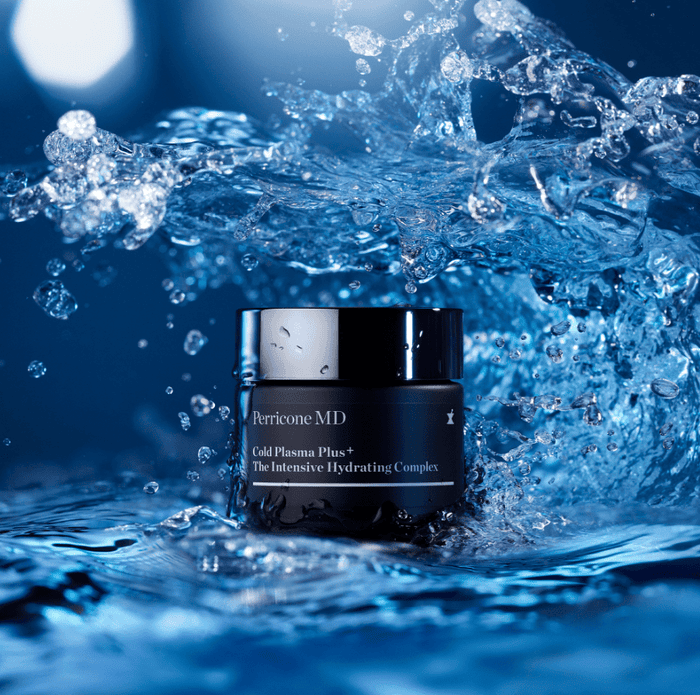
Perricone MD’s new Cold Plasma Plus+ The Intensive Hydrating Complex—the latest innovation in the best-selling Cold Plasma Plus+ franchise —has an ultra-rich, balm-like texture and hydrates skin with a trio of powerful humectants (acetyl hexapeptide-8, sodium hyaluronate). It also contains a vegetable triglyceride complex, a moisturizing blend of jojoba, soybean and olive oils, to help support the skin’s lipid barrier, preventing water from sneaking out of skin cells. Other key ingredients include peptides, to firm skin; and Vitamin C Ester, which smooths and brightens the appearance of skin. Additionally, Perricone MD’s liquid crystal delivery system ensures that all of the important active ingredients penetrate deep within the skin for optimal effectiveness. Keep in mind that you can use the product on any skin type, even on oily skin, as this type of skin can still become dehydrated.
Hydrated and moisturized skin looks younger, which is why when 39 women used Cold Plasma Plus+ The Intensive Hydrating Complex daily in a clinical study for eight weeks, 100% showed a reduction of fine lines, wrinkles and pores; 85% showed improved elasticity and skin tone; 85% showed reduced skin redness; and 80% showed a reduction in dark spots.
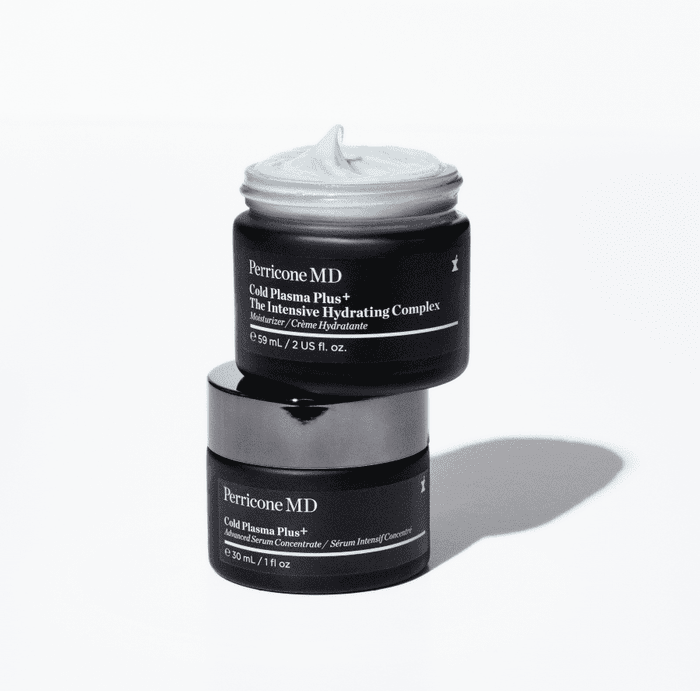
To apply the moisturizer, rub it between your fingertips for a few seconds to warm it up, then massage it onto your face and neck using a gentle upward motion until the cream is fully absorbed into your skin. (For best results, layer it over the Cold Plasma Plus+ Advanced Serum Concentrate or the Cold Plasma Plus+ CBD Advanced Serum Concentrate.) Using the Cold Plasma Plus+ The Intensive Hydrating Complex morning and evening will provide your skin with all the water it needs to keep your complexion looking radiant, vibrant and supple—whether it’s dry, dehydrated, or both.
